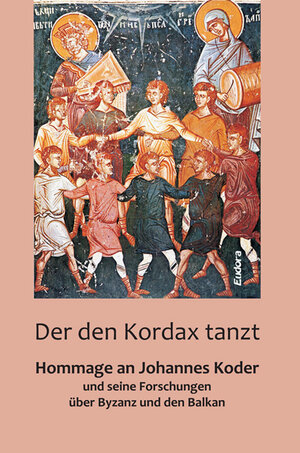
Der Sammelband mit Beiträgen zu archäologischen, toponomastischen, historischen, philologischen, historisch-geographischen und kunsthistorischen Themen wendet sich vornehmlich an Fachkollegen und Studierende der betreffenden Disziplinen (Mittelalterforschung/Mediävistik, Byzantinistik, historische Südosteuropaforschung, historische Hilfswissenschaften/Grundwissenschaften), aber auch an Leser mit Interesse an Einzelaspekten (Herrschaft, Migration, Stadtentwicklung, Kriegsführung, Heiligenviten, Quellen) der politischen, wirtschaftlichen und sozialen Entwicklung Südosteuropas während der Antike und des Mittelalters.
Der den Kordax tanzt
Hommage an Johannes Koder und seine Forschungen über Byzanz und den Balkan
herausgegeben von Mihailo St. Popović, Vratislav Zervan und Ralf C. MüllerOn the occasion of Johannes Koder’s (*1942) 80th birthday, friends, companions, students, and colleagues present this commemorative publication, whose content relates to the research interests of the celebrant, which he always pursued as Professor of Byzantine Studies at the Johannes Gutenberg University Mainz (1978–1985) and of Byzantine Studies at the University of Vienna (1985–2010) in his teachings and research with great zeal, enthusiasm, and originality. They essentially include aspects of historical geography, economic history, archaeology, Greek studies, and philology as well as hymnology of the Byzantine Empire, by which he inspired the contributors in various ways during his active career.
For this reason, archaeological, toponomastic, historical, philological, historical-geographic, and art-historical topics can be found in this volume. Johannes Koder’s alert, creative spirit is also evidenced by his preoccupation with supposed “fringe topics” in Byzantine and Balkan Studies, such as the Kordax – the “Dance of the Slavs” that gives this publication its name.





